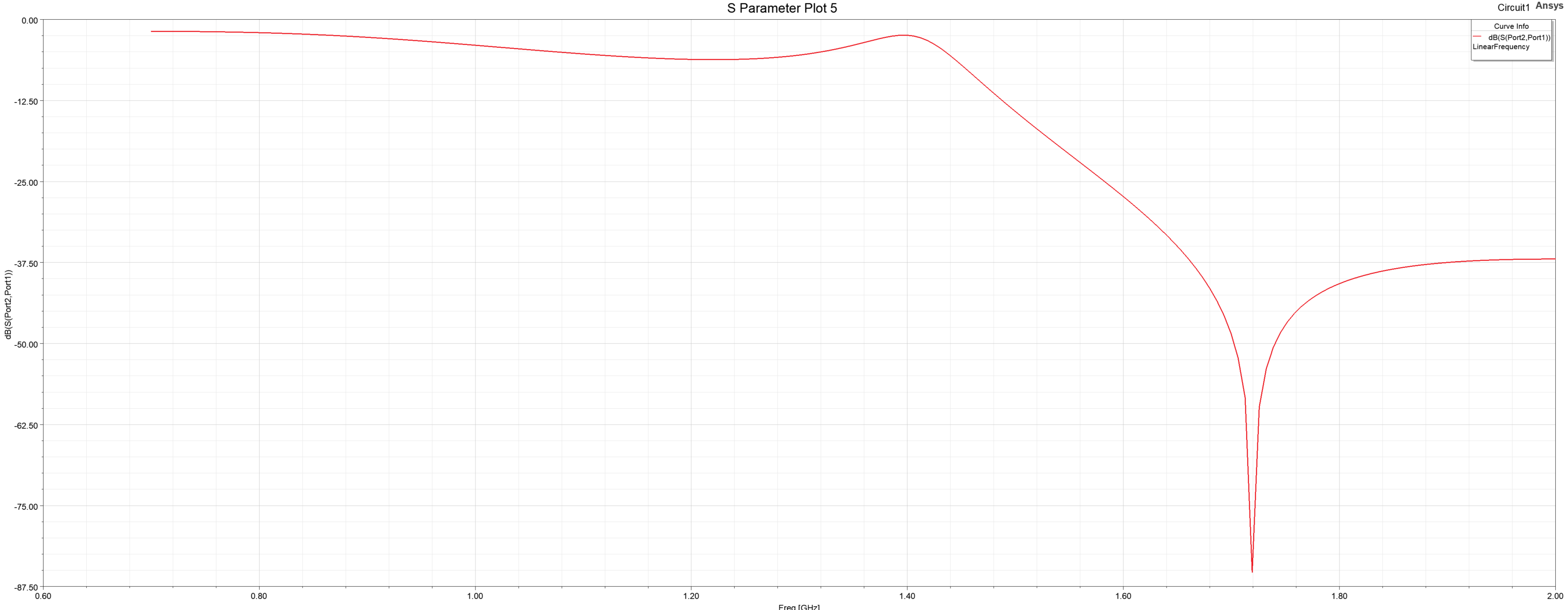I am designing matching network at 868MHz frequency. I have a source impedance of Z=15.27-j1.27. In order to match that with 50 Ohm, I implemented LC matching network (red color). After that in order to filter second harmonics, I implemented band stop filter (green color). Following that, in order to filter higher order, I implemented CLC filter (purple color). All these are designed for 868MHz frequency.
But my problem now is that, when I implemented and analyzed this circuit in Ansys Circuit, I am not getting required output. I have attached my circuit and its result below. Please help me to solve this and correct if there are any mistakes in the component values at the required frequency 868MHz.






